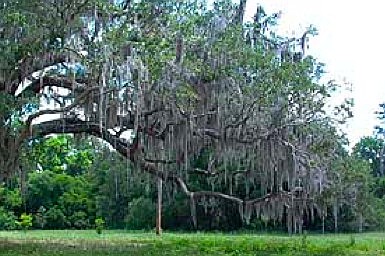- April 24, 2024
-
-
Loading

Loading

Everybody’s seen it: graceful oaks draped with Spanish moss, or its cousin plant, ball moss.
But fewer know what those plants are, exactly, or what they do. And lately, some Palm Coasters have called the city about the moss, concerned that it’s damaging local trees.
Not to worry, said Palm Coast Urban Forester Carol Mini.
“Only a few plants are harmful,” she said in a news release using information from the University of Florida IFAS Extension Service. “Most are ‘just there,’ and do not harm the tree.”
Spanish moss, she said, “has no roots, so it is not a parasite of the host tree.” Instead, the air plant’s “stems and leaves are slender and curly, and catch water and nutrients from dust.”
Air plants like Spanish moss and ball moss appear more often on stressed branches and trees, she said, because the thinner foliage lets more light through.
“Air plants grow faster on stressed trees because the tree is weakened, but are not the cause of poor tree growth,” Mini said.
The only danger? That the moss gets so thick that it blocks sunlight from a trees’ leaves, slowing growth, or that it becomes waterlogged and heavy during a rain, straining or breaking a limb.
Spanish moss and ball moss are both native, and relatives of the pineapple.
Other harmless denizens of local trees include lichens, those fuzzy, brightly colored splotches that appear on a tree’s bark.
They’re odd hybrids — fungus gives them their shape and protection, and algae provides color and food — and can bug perfectionistic landscapers, Mini said. But they don't bug the tree.
Want a true parasite? Here’s one many of us bring it into our homes in the winter season: Mistletoe.
It grows in laurel oaks, elms and some other hardwoods, Mini said, and is now visible in the thin foliage of local semi-deciduous trees.
“Mistletoe appears as a darker green ball of foliage on an otherwise bare tree canopy,” she said, and “is one of the few things found growing on our trees which may harm the tree,” especially if it’s already stressed from hurricane damage, construction impacts, disease or old age.
Homeowners concerned about mistletoe in their trees can remove it from smaller branches by cutting the branch several inches below the connection point, Mini said.
To learn more about the plants and creatures in Florida backyards, see solutionsforyourlife.ufl.edu/.